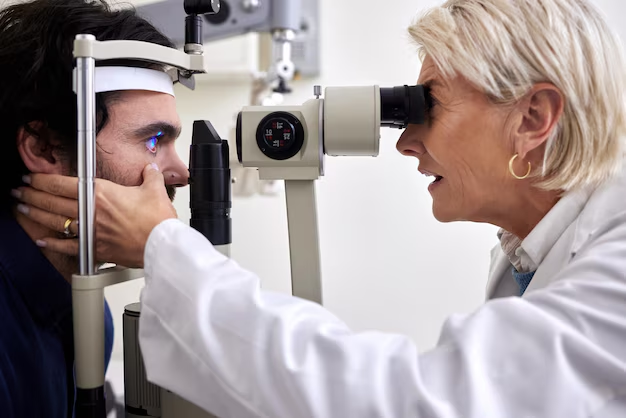Understanding Cataracts: How Fast Do They Grow?
Have you ever wondered how quickly cataracts progress? It’s a common concern for those facing vision changes or those who are monitoring their eye health. Cataracts, a prevalent condition especially among older adults, are not only a natural part of aging but also a condition that can vary widely in its progression. Let’s dive into understanding cataracts, their growth rate, and what factors influence this process.
🌟 What are Cataracts?
Cataracts are a clouding of the eye’s natural lens, situated behind the iris and the pupil. They are among the most common causes of vision impairment. As cataracts develop, they can blur vision over time, making everyday activities such as reading, driving, or recognizing faces challenging. It's important to note that while cataracts are widespread, the symptoms and the rate of progression can vary significantly from person to person.
Types of Cataracts
- Nuclear Cataracts: These affect the center of the lens and are most commonly associated with aging.
- Cortical Cataracts: These begin on the lens' periphery and work inward, often causing glare issues.
- Posterior Subcapsular Cataracts: Typically form at the back of the lens and may develop faster than the other types.
Understanding which type you have can give some insight into how your cataracts might progress.
⏩ Factors Influencing Cataract Growth
Cataracts generally progress slowly, but various factors can affect how quickly they develop:
1. Age
As we age, proteins in the lens naturally begin to break down, forming clumps and causing cataracts. While many individuals over 60 experience some degree of lens clouding, the growth rate can vary tremendously.
2. Genetics
Genetic predisposition plays a role in cataract development. If your family has a history of cataracts, you might experience them earlier or notice faster progression.
3. Lifestyle and Health Habits
- Smoking: Known to hasten cataract progression due to the oxidative stress and damage caused by tobacco.
- Alcohol Consumption: Excessive alcohol intake has been linked to quicker cataract formation.
- Diet: A diet lacking antioxidants can decrease lens health, accelerating cataract growth.
4. Medical Conditions and Medications
- Diabetes: Increases the risk of cataracts and accelerates their development due to sugar-related changes in the lens.
- Medication: Long-term use of steroids and certain medications can contribute to faster cataract formation.
🔍 How Fast Do Cataracts Grow?
The progression rate of cataracts can be quite individual. Many experience a gradual progression over several years, while others might observe a more rapid change. Some cataracts remain small and progress very slowly, making significant vision impact only after many years.
Progression Timeline
- Early Stage: Lens starts clouding; minor vision changes may go unnoticed.
- Moderate Stage: Vision begins to blur; corrective lenses might help to an extent.
- Advanced Stage: Significant vision impairment; surgical intervention usually recommended.
💡 Key Factors in Managing Cataract Growth
Managing cataracts involves regular eye check-ups and monitoring symptoms. If cataracts start to interfere with your daily activities, it may be time to consider treatment options.
Lifestyle Adjustments
- Healthy Diet: Incorporate foods rich in antioxidants, like fruits and vegetables, to support eye health.
- Protective Eyewear: Sunglasses with UV protection can help reduce the risk of cataract growth caused by prolonged sun exposure.
- Quit Smoking: Reducing or quitting smoking lessens oxidative stress on the eyes.
Regular Eye Examinations
Frequent exams allow eye care professionals to track cataracts' development and suggest opportune moments for intervention. Regular monitoring is especially critical for individuals with risk-enhancing factors like diabetes.
👁️ Cataract Surgery: A Lasting Solution
Surgery is often the definitive treatment when cataracts significantly affect vision. It involves removing the clouded lens and replacing it with an artificial one. Most patients experience significantly improved vision post-surgery.
When to Consider Surgery
- Vision Interference: Difficulty with daily tasks such as reading or driving.
- Quality of Life: If cataracts significantly impede your life enjoyment or productivity.
📑 Quick Summary: Managing Cataracts
Here’s a handy summary to keep in mind:
- 👴 Age Factor: Aging is the most common cause; regular check-ups are crucial.
- 🧬 Genetic Influence: Family history can affect onset and progression.
- 🍎 Lifestyle Choices: Healthy habits can slow progression.
- ✒️ Regular Monitoring: Key to identifying the best time for treatment.
- 🌞 UV Protection: Essential for reducing risk.
✨ Final Insight
Cataract progression varies widely among individuals, influenced by a mix of genetic, health, and lifestyle factors. While the condition is part of the aging process, being proactive with preventative measures and regular eye exams can slow its progression and help maintain your quality of life. Understanding these factors empowers you to make informed decisions about your eye health and consider timely interventions such as cataract surgery when necessary. Stay informed, stay proactive, and keep focusing on a brighter visual future!
